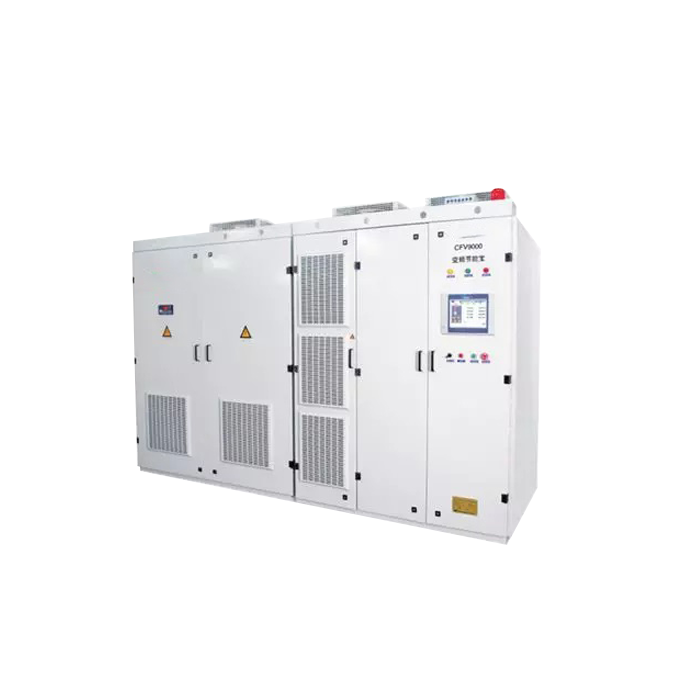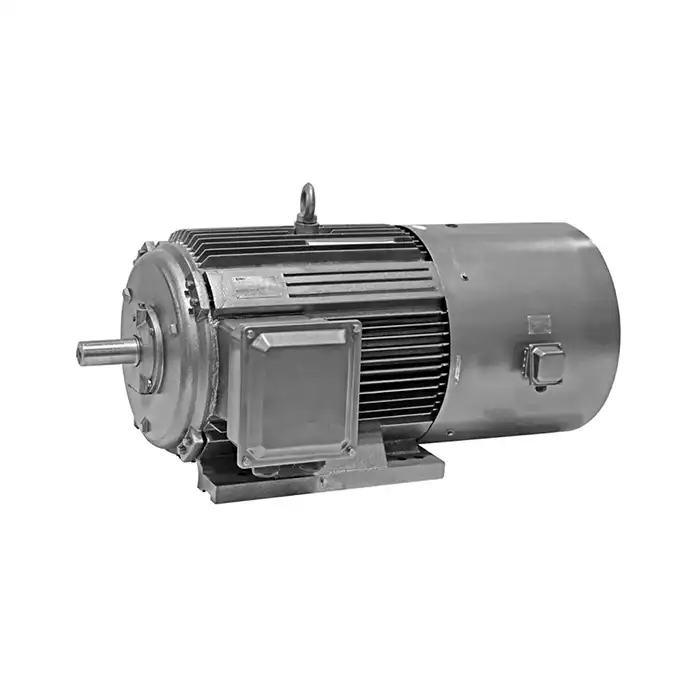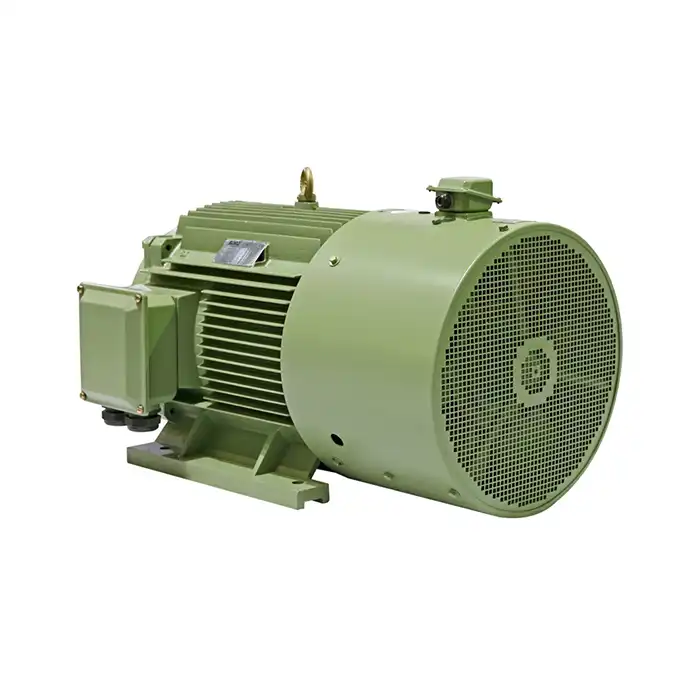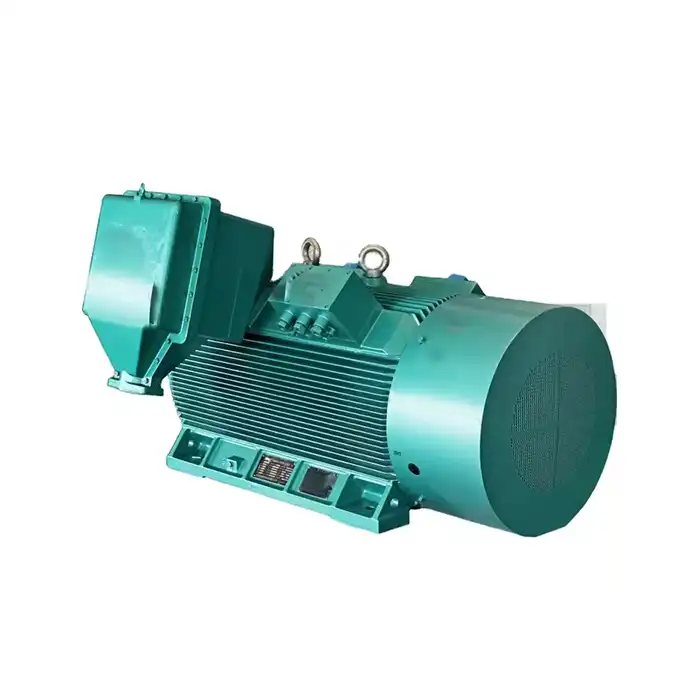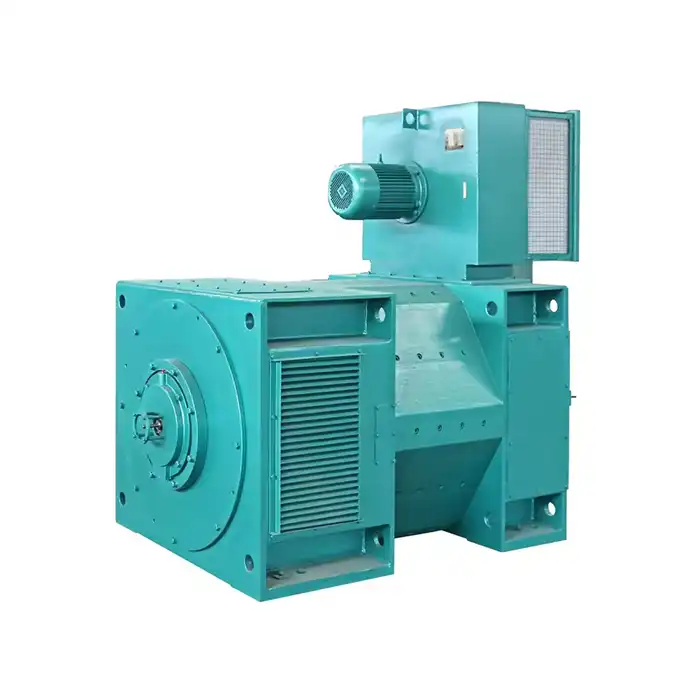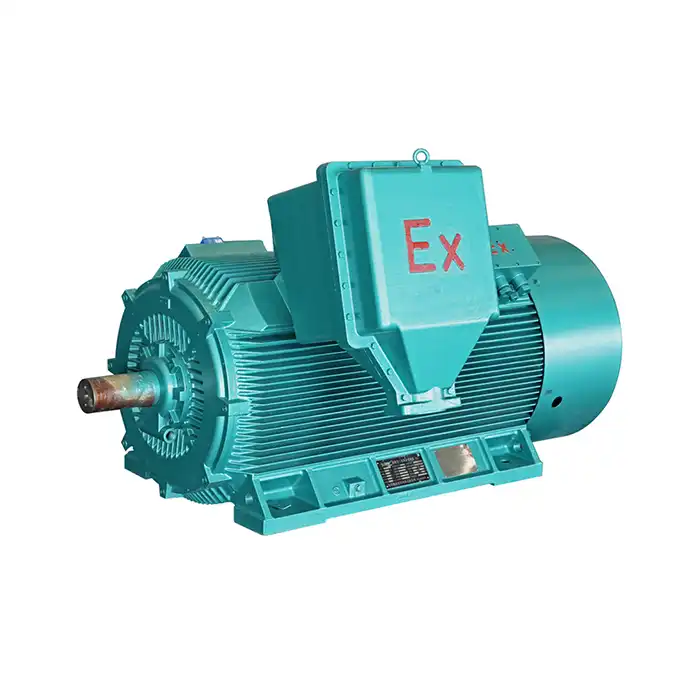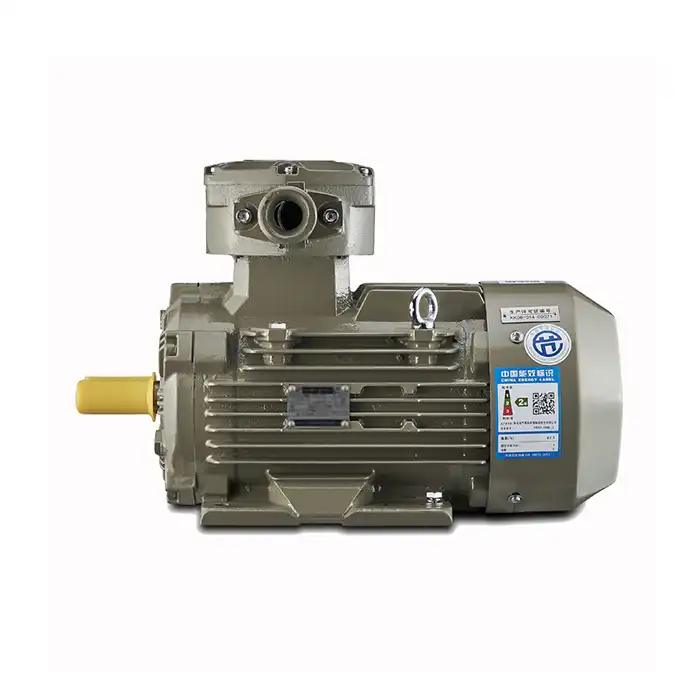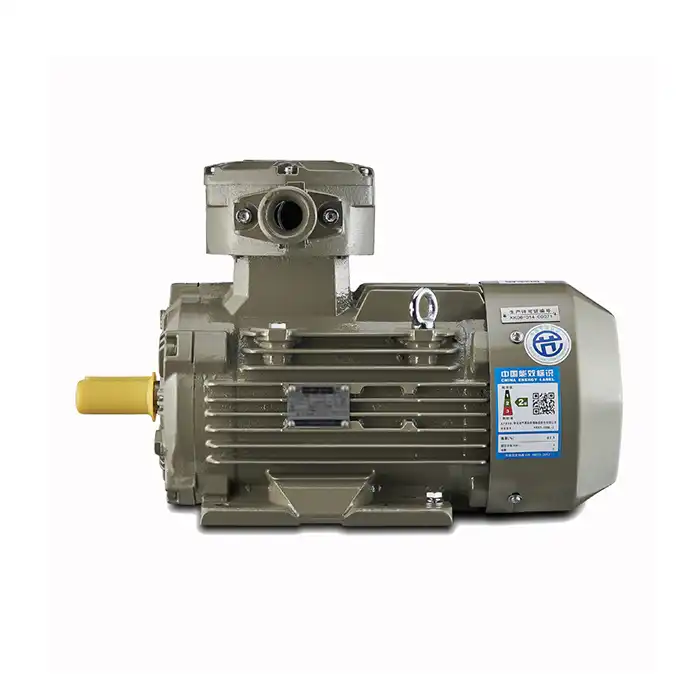LV induction motors play a pivotal role in powering various industries with three-phase AC power ranging between 200 V and 690 V. These squirrel cage electric motors are prized for their robust design, high efficiency (IE3 energy efficiency class), and consistent torque output, which makes them indispensable across manufacturing, HVAC, energy, and transportation sectors. Thanks to their low voltage operation, remarkable reliability, and adaptability, LV induction motors deliver optimized energy consumption and reduced maintenance costs, boosting productivity in demanding environments.
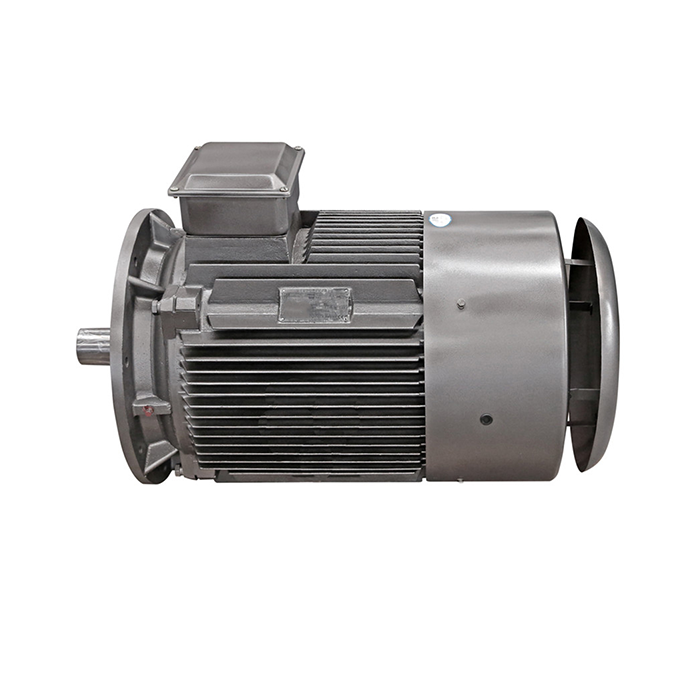
Series:YE3
Frame number: 80-450
Power range:0.75-1000kW
Protection level:IP55
Energy efficiency class: IE3
Voltage range: 380V,400V,415V,660V, etc.
Application:can be used in various fields of the national economy, such as machine tools,water pumps,fans,compressors,and can also be used in transportation, mixing, printing, agricultural machinery, food and other occasions that do not contain flammable, explosive or corrosive gases.
Certificate: international standard IEC60034-30 "Efficiency Classification of Single-speed Three-Phase Squirrel Cage Induction Motors".
Advantage:The high quality of the electric motor guarantees high operational reliability.
Others: SKF, NSK, FAG bearings can be replaced according to customer requirements.
Key Parameters and Indicators of LV Induction Motors
Understanding the critical specifications is essential for selecting the right motor.
Power Output Range
LV induction motors offer a broad power output range, typically from 0.75 kW to 1000 kW. This flexibility allows them to cater to a wide variety of applications, from small machines and household appliances to large industrial equipment, ensuring there is a suitable motor for nearly every need.
Speed Variability
These motors are designed to operate with variable speeds, generally ranging from 500 to 3000 RPM. This speed flexibility is essential for applications requiring precise speed control, such as conveyor belts, pumps, and fans, where different operational speeds are necessary to match varying load conditions.
Voltage and Protection Classes
LV induction motors can operate within a voltage range from 380V to 660V, accommodating diverse industrial power supply systems. They also come with varying protection classes, starting at IP55, which ensures resistance to dust and water ingress. For more demanding environments, options like IP56 and IP65 offer enhanced protection against harsher conditions.
Insulation Ratings
To ensure reliable performance in different environments, LV induction motors typically feature Class F insulation, which can withstand temperatures up to 155°C. For more extreme thermal conditions, Class H insulation is also available, providing added durability in high-temperature settings such as manufacturing plants and industrial machinery.
Power Factor and Torque Capacity
The power factor of these motors typically ranges from 0.80 to 0.89, ensuring efficient energy consumption. They also feature torque capacities that can reach up to 2400 Nm, making them ideal for applications that require high starting torque, such as heavy machinery and large equipment, ensuring smooth and consistent operation under load.
Core Benefits of LV Induction Motors
LV induction motors offer a suite of advantages crucial to industrial automation and beyond.
High Operational Reliability
Premium-grade silicon steel rotors and stators contribute to minimal core losses, ensuring efficient energy use. Additionally, precision die-cast aluminum frames offer a lightweight yet robust construction, enhancing the motor’s durability while maintaining its structural integrity. This reliability ensures long-lasting performance, even in demanding industrial environments.
Energy Efficiency and Environmental Impact
These motors are consistently rated at IE3 efficiency, which means they are optimized to minimize energy consumption. By reducing power wastage, they help lower operational costs and contribute to a reduced carbon footprint. This makes LV induction motors an environmentally friendly choice for industries striving to improve energy efficiency while meeting sustainability goals.
Precision Speed Control with VFD Compatibility
LV induction motors are compatible with Variable Frequency Drives (VFDs), allowing for precise speed control in various applications. Whether for pumping systems, conveyor drives, or HVAC systems, the ability to adjust speed as needed ensures that the motor operates efficiently, regardless of load variations. This versatility improves performance and reduces wear on mechanical components.
Customizable Bearings for Extended Service Life
These motors offer customizable bearing options, including renowned brands like SKF, NSK, and FAG. By choosing the right bearings for the application, companies can enhance the motor's performance, reduce maintenance frequency, and extend its service life. The flexibility to select high-quality bearings helps maintain smooth operation, even under heavy or continuous load conditions.
How to Maximize Benefits from Your LV Induction Motor
Leveraging the full value of LV induction motors starts with proper selection based on load type and environmental conditions. Consider motors with appropriate insulation class ratings and protection levels tailored to the operational climate. Employing matched variable frequency drives can enhance energy efficiency and enable fine-tuned speed control, essential for applications requiring variable torque. Scheduled maintenance of bearings and insulation ensures uninterrupted performance, while monitoring power factor and starting currents helps detect early signs of motor degradation. Purchasing from reputable sources like XCMOTOR, where customer support and product customization options are robust, further optimizes lifecycle costs and operational reliability.
Common Uses for LV Induction Motors
HVAC Systems
Low voltage (LV) induction motors are widely used in HVAC (Heating, Ventilation, and Air Conditioning) systems. They power fans, blowers, and compressors, which are crucial for air circulation and temperature control in residential, commercial, and industrial buildings. These motors are chosen for their reliability and ability to operate efficiently under varying load conditions, helping to maintain consistent air quality and temperature control.
Pumps and Water Treatment Plants
LV induction motors are essential in pump systems, especially in water treatment plants. They are used to drive water pumps for circulation, filtration, and distribution. The motors' robustness and simple construction make them ideal for continuous operation, even in challenging conditions, such as in municipal water systems or irrigation projects. Their low maintenance requirements ensure smooth and reliable operation over time.
Conveyor Systems
In industries such as manufacturing, logistics, and food processing, LV induction motors are commonly found in conveyor systems. These motors provide the necessary power to move materials, products, or goods along assembly lines or through packaging systems. Their versatility and consistent performance make them a go-to solution for automating material handling processes and improving productivity.
Industrial Machinery
LV induction motors are also frequently used to power various types of industrial machinery, including machines for cutting, grinding, and milling. They provide the torque and speed control required for precise and efficient operation. These motors' rugged design allows them to perform well in environments that demand continuous operation, such as factories and production facilities.
Important Notes When Using LV Induction Motors
Although LV induction motors are robust, attention to installation and operating conditions is vital. Avoid environments with flammable, explosive, or corrosive gases as these motors are not designed for such hazards. Ensure ambient temperatures remain within the -10°C to +40°C range and altitude does not exceed 1000 meters unless special considerations are met. Pay close attention to the motor's capability to handle starting currents and torque demands to prevent electrical stress. Proper grounding and usage of protective devices will safeguard against electrical faults. Lastly, verify that all motor specifications align with the requirements of the machinery and process controls where they are implemented.
Conclusion
Choosing the right LV induction motor is essential for efficient, reliable operation across diverse industries. With their high energy efficiency, sturdy design, and compatibility with modern drive systems, these motors power industrial automation, energy production, and transportation solutions seamlessly. XCMOTOR's dedication to quality, rapid delivery, and technical expertise places them as a dependable choice for businesses seeking performance and longevity in their motor investments. Understanding the motor's key parameters, maintenance needs, and application specifics ensures users maximize returns while minimizing risks.
Frequently Asked Questions
Q1: What industries benefit most from LV induction motors?
A: LV induction motors are widely utilized in industrial automation sectors including automotive manufacturing, aerospace, food processing, and HVAC systems. They also serve critical roles in energy utilities, water treatment, agriculture, and transportation industries due to their versatility and robust performance.
Q2: How does the efficiency class IE3 impact energy consumption?
A: IE3 motors meet international standards for high efficiency, reducing electrical energy waste during operation. This results in lower operational costs, diminished environmental impact, and compliance with stringent energy regulations.
Q3: Can XCMOTOR's LV induction motors be integrated with variable frequency drives (VFDs)?
A: Yes, XCMOTOR designs their LV induction motors for compatibility with VFDs, enabling precise speed and torque control, which optimizes energy use and improves process flexibility.
Q4: What maintenance is required to prolong motor life?
A: Routine inspection of bearings, insulation, and electrical connections, combined with monitoring temperature and vibration levels, helps maintain optimal motor condition and prevents unexpected failures.
Where to Buy LV Induction Motor
XCMOTOR is your trusted partner for high-quality LV induction motors tailored to meet demanding industrial requirements. To explore our full range and receive personalized support, contact us at xcmotors@163.com. Our team is ready to assist with inquiries about power ratings, customization, and delivery options. As a reliable LV Induction Motor supplier, we ensure unmatched performance, helping you elevate your operational efficiency. Discover the difference with XCMOTOR's LV induction motors today!
References
- IEC 60034-30: Efficiency classification of single-speed, three-phase, squirrel cage induction motors
- IEEE Std 112: Methods for Testing Induction Motors
- Energy Efficiency Trends in Electric Motor Systems by International Energy Agency (IEA)
- “Electric Machinery Fundamentals” by Stephen J. Chapman
- “Industrial Motor Control” by Stephen L. Herman
- “Optimization of Induction Motor Performance Using Variable Frequency Drives” – Journal of Electrical Engineering



